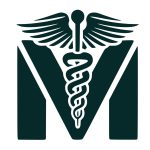Treatment
Bladder Cancer
What is Bladder Cancer?
Bladder cancer develops in the tissues of the bladder (the hollow organ that stores urine). It’s the 4th most common cancer in men, but less frequent in women. Here’s a concise yet comprehensive overview:
Types of Bladder Cancer:
- Urothelial Carcinoma (Transitional Cell Carcinoma – TCC)
- ~90% of cases. Arises from the urothelial cells lining the bladder.
- Subtypes: Non-muscle-invasive (NMIBC, 75% of initial diagnoses) vs. Muscle-invasive (MIBC).
- Squamous Cell Carcinoma (SCC)
- ~5%. Linked to chronic irritation (e.g., recurrent infections, schistosomiasis in endemic areas).
- Adenocarcinoma
- ~2%. Often associated with bladder exstrophy or persistent inflammation.
- Rare Types: Small cell carcinoma, sarcoma.
Symptoms:
- Hematuria: Painless blood in urine (most common sign; gross or microscopic).
- Urinary Changes: Frequency, urgency, dysuria (burning).
- Advanced Disease: Pelvic pain, flank pain (ureteral obstruction), leg swelling, weight loss.
Red Flag: Any episode of gross hematuria warrants investigation, even if transient.
Risk Factors:
- Smoking: #1 risk (↑ risk 3–4×); causes ~50% of cases.
- Chemical Exposure: Occupational (dyes, rubber, textiles, paints; carcinogens like benzidine, β-naphthylamine).
- Chronic Bladder Irritation:
- Recurrent UTIs, bladder stones, and long-term catheter use.
- Schistosoma haematobium infection (SCC in Africa/Middle East).
- Age/Gender: >90% occur in >55-year-olds; men 3–4× more affected.
- Genetics: Family history, HRAS, RB1, Cowden syndrome.
- Prior Cancer Treatment: Cyclophosphamide chemo, pelvic radiation.
Diagnosis
- Urine Tests:
- Cytology: Detects cancer cells (low sensitivity for low-grade tumors).
- NMP22, FISH, UroVysion®: Biomarkers for recurrence monitoring.
- Imaging:
- CT Urogram: Evaluates kidneys, ureters, bladder; detects tumors/obstruction.
- Ultrasound: Initial hematuria workup.
- Cystoscopy + Biopsy:
- Gold standard. A scope visualizes the bladder; suspicious areas are biopsied/resected (TURBT).
Treatment Options:
- Non-Muscle-Invasive (NMIBC):
- TURBT (Transurethral Resection): Initial tumor removal.
- Intravesical Therapy: Drugs instilled into the bladder:
- Immunotherapy: BCG vaccine (lowers recurrence/progression; 1st-line for high-risk).
- Chemotherapy: Mitomycin C, gemcitabine (for intermediate/low-risk).
- Muscle-Invasive (MIBC):
- Radical Cystectomy: Removal of bladder + nearby organs (prostate/uterus) + pelvic lymph nodes.
- Bladder Reconstruction: Ileal conduit (urostomy) vs. neobladder.
- Trimodal Therapy (TMT): TURBT + chemo + radiation (for select patients avoiding surgery).
- Neoadjuvant Chemo: Cisplatin-based before surgery (improves survival).
- Metastatic Disease:
- Chemotherapy: Gemcitabine + cisplatin (1st-line).
- Immunotherapy: Checkpoint inhibitors (e.g., pembrolizumab, atezolizumab).
- Targeted Therapy: Erdafitinib (FGFR3 mutations), enfortumab vedotin (antibody-drug conjugate).
Prognosis:
- NMIBC: High survival (>90% 5-year) but 60–70% recurrence rate; requires lifelong monitoring.
- MIBC:
- Localized (T2): ~50–60% 5-year survival.
- Metastatic: ~10–15% 5-year survival.
- Key Prognostic Factors: Stage, grade, CIS presence, lymphovascular invasion.
Surveillance & Prevention
- Lifelong Cystoscopy: Every 3–6 months initially (NMIBC).
- Smoking Cessation: Most impactful preventive measure.
- Workplace Safety: Reduce exposure to industrial chemicals.
- Hydration: Dilutes urinary carcinogens.
Consult a urologist or urologic oncologist for personalized care. Need details on specific stages, treatments, or support resources?


